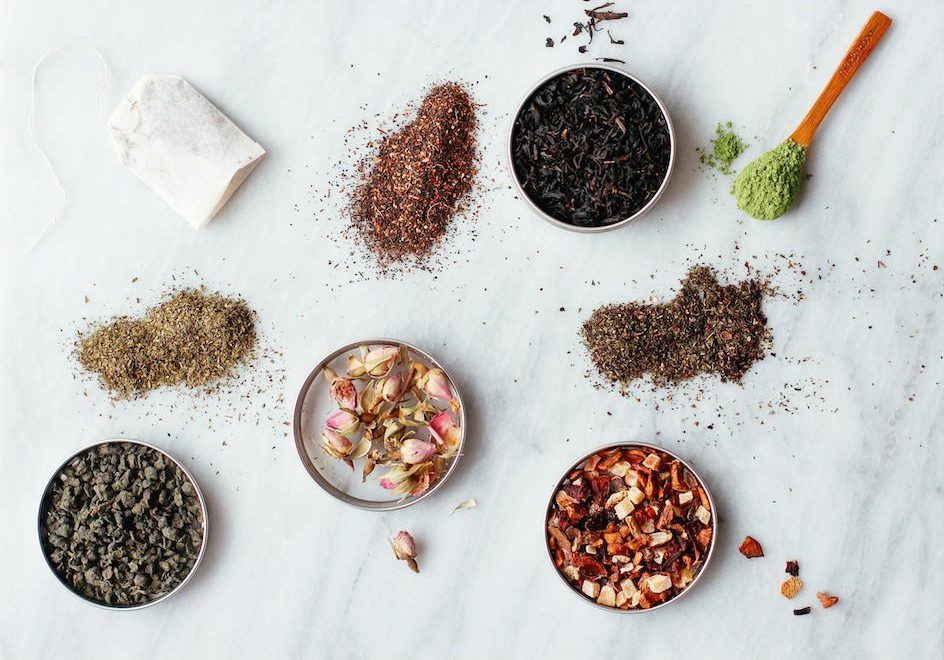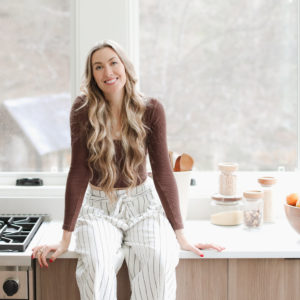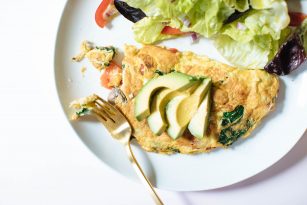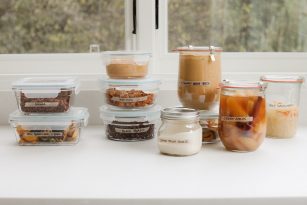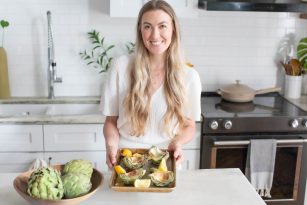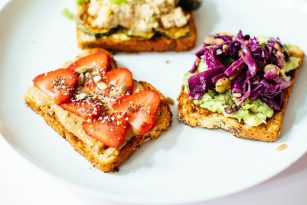Discover the amazing varieties of tea and their health benefits, and ways you can welcome this ritual into your daily routine.
Tea holds a very special place in my life. I know some of you may be thinking it’s that odd one food or drink can hold so much space in a person’s life, but it’s true.
It’s far more than a hot beverage, it’s the ritual, the routine, the present moment-ness and mindfulness cultivated during making tea and sharing tea with loved ones that makes it so special. I truly enjoy the whole process of heating the kettle, waiting to hear the whistle, pouring the hot water, and letting it rest before snuggling my hands around the mug and enjoying a cup.
So whether tea already has a special place in your life, or you’re just starting to learn more about drinking tea, I hope this post guides you in picking out your favorites. All it takes is your favorite mug, hot water, and the tea. Then, it’s all about enjoying the moment. Cheers!
Why tea is so good for you!
- Fights free radicals
- Is a great low-calorie or no-calorie drink to enjoy daily (just safely and moderately)
- Green tea may improve exercise endurance
- Reduces cardiovascular disease
- Helps fight cancer (read more here and here and here and here and here)
- Is hydrating
- May help reduce metabolic syndrome and reduce waist size circumference
- Maybe helpful for those with diabetes
- Increases bone density
- May help reduce oxidative damage from smokers
- Improves brain health
- Tastes amazing!
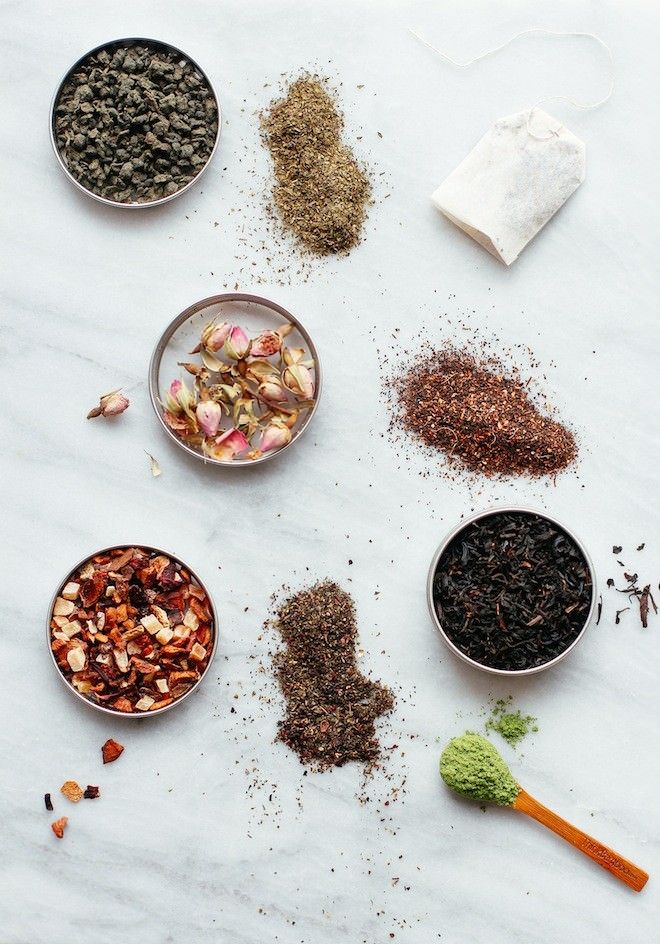
Most Common Types of Tea and How to Make Them
Black Tea
Black teas are one of the most popular varieties of tea here in North America but also in other tea loving cultures around the world! Black tea is made by rolling the tea leaves and bruising them, which causes rapid oxidization of the leaf (for example, think about when you cut into an apple or avocado and how it quickly turns brown.
This is oxidization!). Oxidation helps increase the flavor and boldness of the tea leaf, which is s then dried and turned into a powder for tea bags or left in its loose leaf form.
Black tea does contain caffeine that is about half the amount of a standard cup of coffee, so if you’re watching your caffeine intake, I would limit black tea or opt for an herbal tea with no caffeine.
- My favorite: London Fog (a mix of earl grey tea + lavender + almond milk + honey)
- Taste: bold, earthy, astringent, citrusy, slightly fruity, robust
Make it: Brew black tea with near-boiling water and let steep for 2-4 minutes
Herbal tea
First off, herbal tea isn’t technically a “tea” as it’s a combination of spices, herbs, flowers, or any of those mentioned combined with a type of tea. For example, peppermint green tea is a combination of mint and green tea leaves.
These are fantastic teas for those of you just starting out drinking tea as they tend to have more familiar flavors and can be fruity, naturally sweet, and delicious. But don’t underestimate the power of drinking herbal teas. There are many herbal/medicinal grade teas made from herbs, spices, and flowers that make an incredible addition to your tea cupboard.
- My favorite: Peppermint, rooibos, chamomile, lavender, ginger, dandelion root, milk thistle, fennel, stinging nettle
- Taste: can be fruity, bold, robust, bitter, neutral, or sweet depending on the herb
- Make it: Brew most herbal teas with near-boiling water and let steep anywhere from 4-15 minutes. For example, ginger and many strong herbal teas are stronger the longer they steep. Try my Turmeric Tea!
Green tea
Green tea is extremely popular in Asian cultures, where tea is not just a beverage, it’s a special time to relax and are the ingredient in tea ceremonies.
Unlike black tea, when tea leaves are picked, they’re immediately heated or steamed to halt the aging and browning/oxidization process resulting in a more delicate tea. Some producers also pan fry or pan cook the tea leaves, which adds a nutty flavor to it. Green tea contains caffeine as well, equivalent to about 1/4 cup of standard coffee.
- My favorite: plain green tea with local and raw honey stirred in last minute
- Taste: sweet, delicate, grassy, nutty
- Make it: Brew green tea with water that’s just starting to steam (180 degrees F) and let steep for 2 minutes.
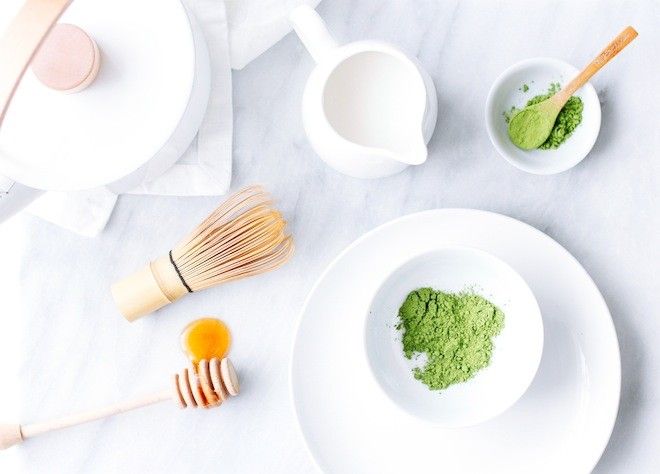
Matcha tea
What is matcha? Matcha is my favorite tea, if not a close second to the rooibos variety. Matcha is loaded with antioxidants and chlorophyll and the flavor is unlike any tea I’ve ever tried.
Matcha green tea is often very popular in Asian cultures and used as ceremonial or imperial grade during tea ceremonies. Matcha tea can be used in teas, baked goods, and food recipes due to its pasty texture. Unlike other teas, you’ll be drinking the entire leaf since its ground into a powder, instead of drinking the tea “water” that comes from steeping tea leaves. This unique characteristic gives matcha a higher fiber content and more nutrients for your body to absorb.
- My favorite: Matcha Tea Latte or add a teaspoon in a green smoothie
- Taste: very sweet, grassy, nutty, very delicate, thick in texture.
- Make it: Try my Matcha Tea Latte, with a step by step tutorial on making this delicate tea
White Tea
What is white tea? White teas are the least oxidized of all the teas, which is why many of them don’t have much color when brewed. They have very delicate flavor profiles, contain high antioxidants, and are typically one of the more expensive teas. Contains caffeine.
- My favorite: plain, silver needle
- Taste: can be sweet, very delicate, floral
- Make it: Brew white teas with just hot water (about 175 degrees F) for 4-5 minutes.
Oolong Tea
What is oolong tea? Oolongs are partially or semi-oxidized, which is why many of them don’t have much color when brewed. They’re also one of the most complex in flavor. Oolong teas can come in green or darker varieties, their flavors will change depending on what variety and their steeping time.
One thing I love about oolong tea is that you can find them rolled into small balls or infusion pellets which expand and flower when boiling water is poured over them. These are beautiful to display in a clear tea steeping pot. Contains caffeine.
- My favorite: plain
- Taste: can be sweet, robust like a black tea, very earthy or gentle and floral
- Make it: Brew greener oolong teas with just steaming water (about 185 degrees F) for 3-4 minutes and darker oolongs with boiling water for 6 minutes.
Tea: I love Yogi tea, Traditional Medicinals (especially for herbals), here for matcha
Mugs: here, monogrammed here, glass sets
Teapots: cast iron here
Tea kettles: white enamel long spout, white enamel regular, glass here
Special tools: mesh tea ball, or a tea set when you want to get fancy!
So there you have it! My quick 101 on tea varieties and tea benefits. I hope you found this educational, and if you’re not a tea lover, I urge you to try one out.

